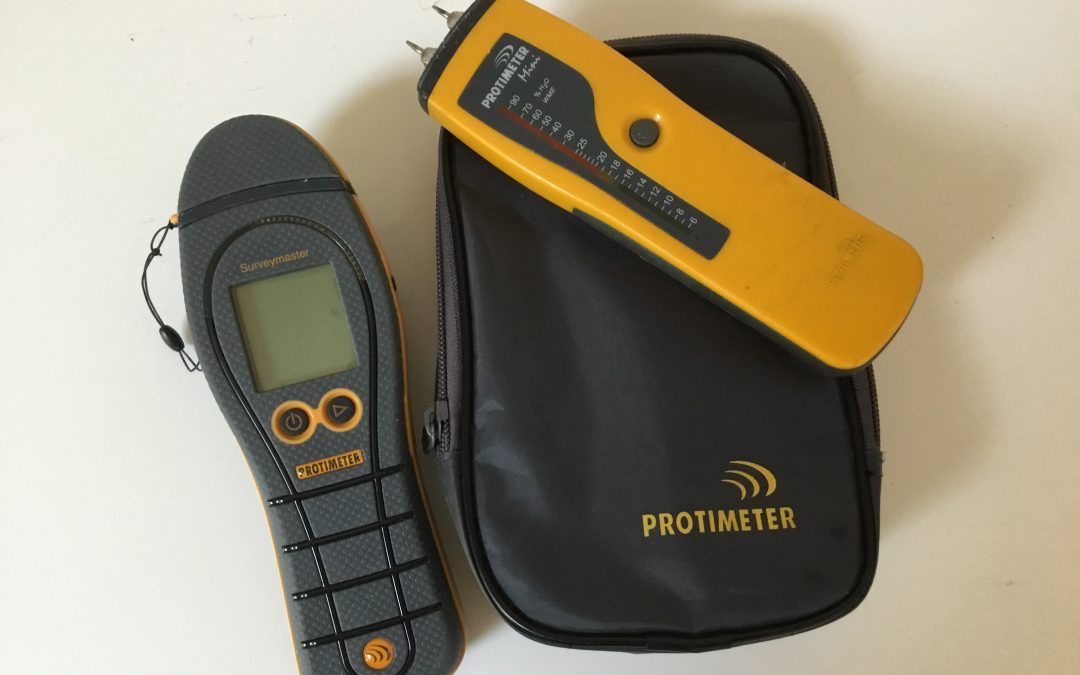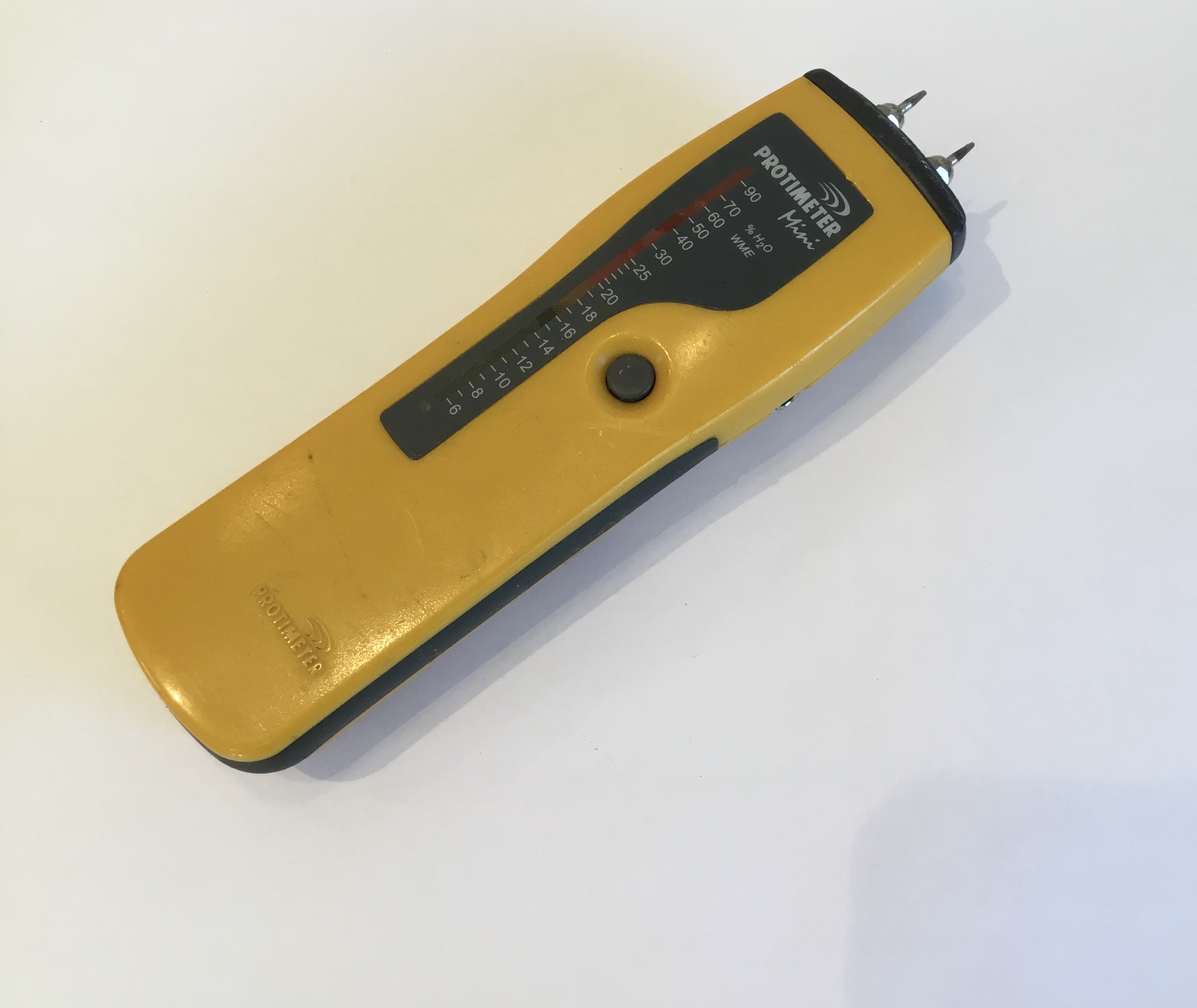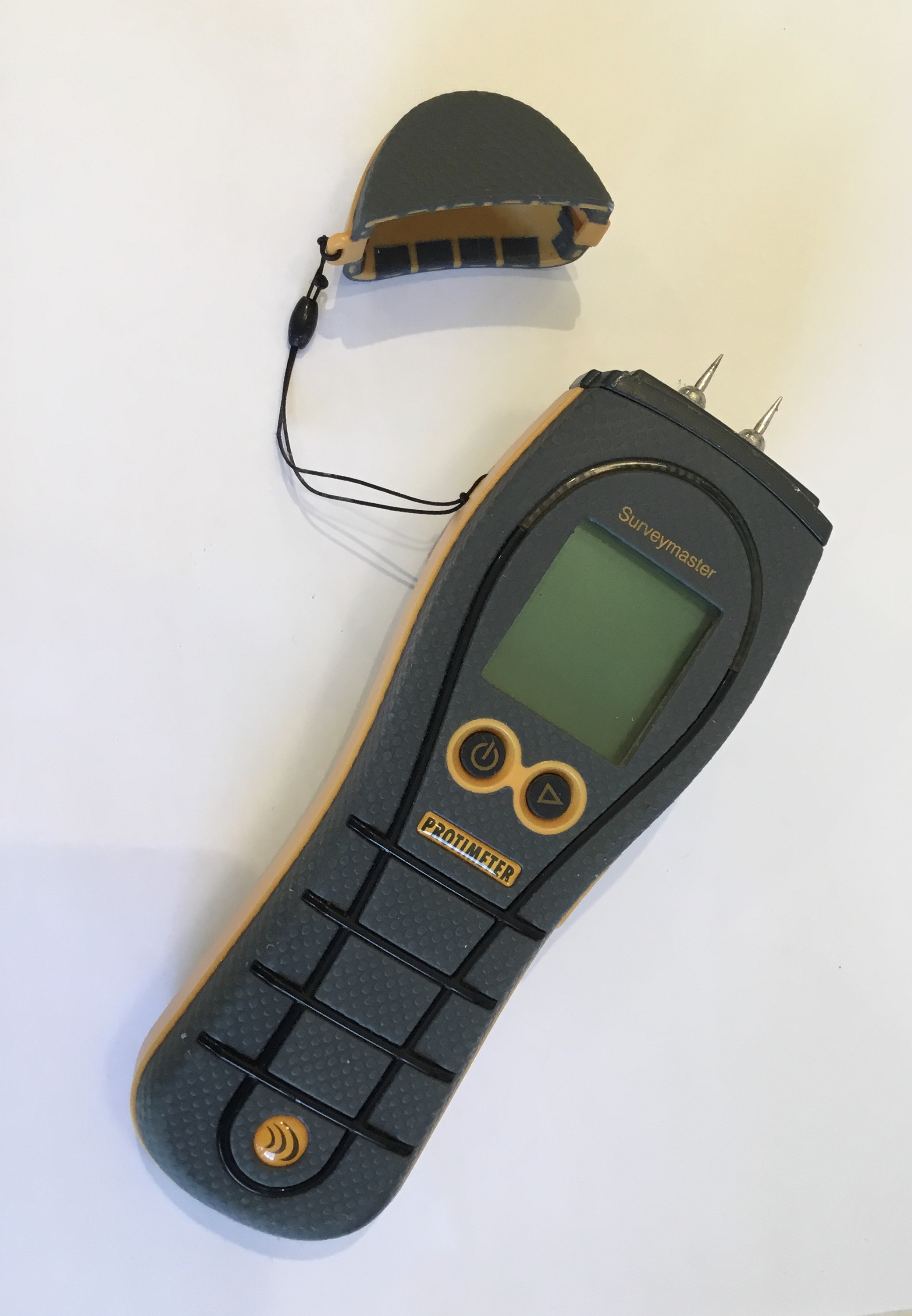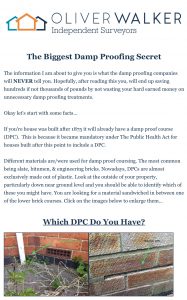The majority of surveyors working within the damp and timber industry will use an electronic moisture meter. There are numerous makes and models available with varying degrees of accuracy.
When I started surveying houses with damp in London in 2007 I was using The Protimeter Mini:
This is a great moisture meter for professional use as it is ACCURATE. It does however, lack an important feature which is the radio frequency sensor. The Protimeter Mini only has the ability to act as a resistance meter. This means that it measures the electrical resistance of the substrate into which you are inserting the two metal probes. It is therefore limited as it must make contact with the substrate being tested. If there is anything obstructing the area eg. tiles or dry lining, then taking an accurate reading can be quite difficult. Still, it is very accurate and relatively inexpensive for an industry standard tool. This moisture meter usually retails at around £130.
A few years later I invested in the more expensive Protimeter Surveymaster:
The only difference apart from appearance is that there is an added feature of “search mode”. This uses a built in radio frequency meter under a sensor pad on the back enabling the user to detect moisture up to around 20mm beneath the surface.
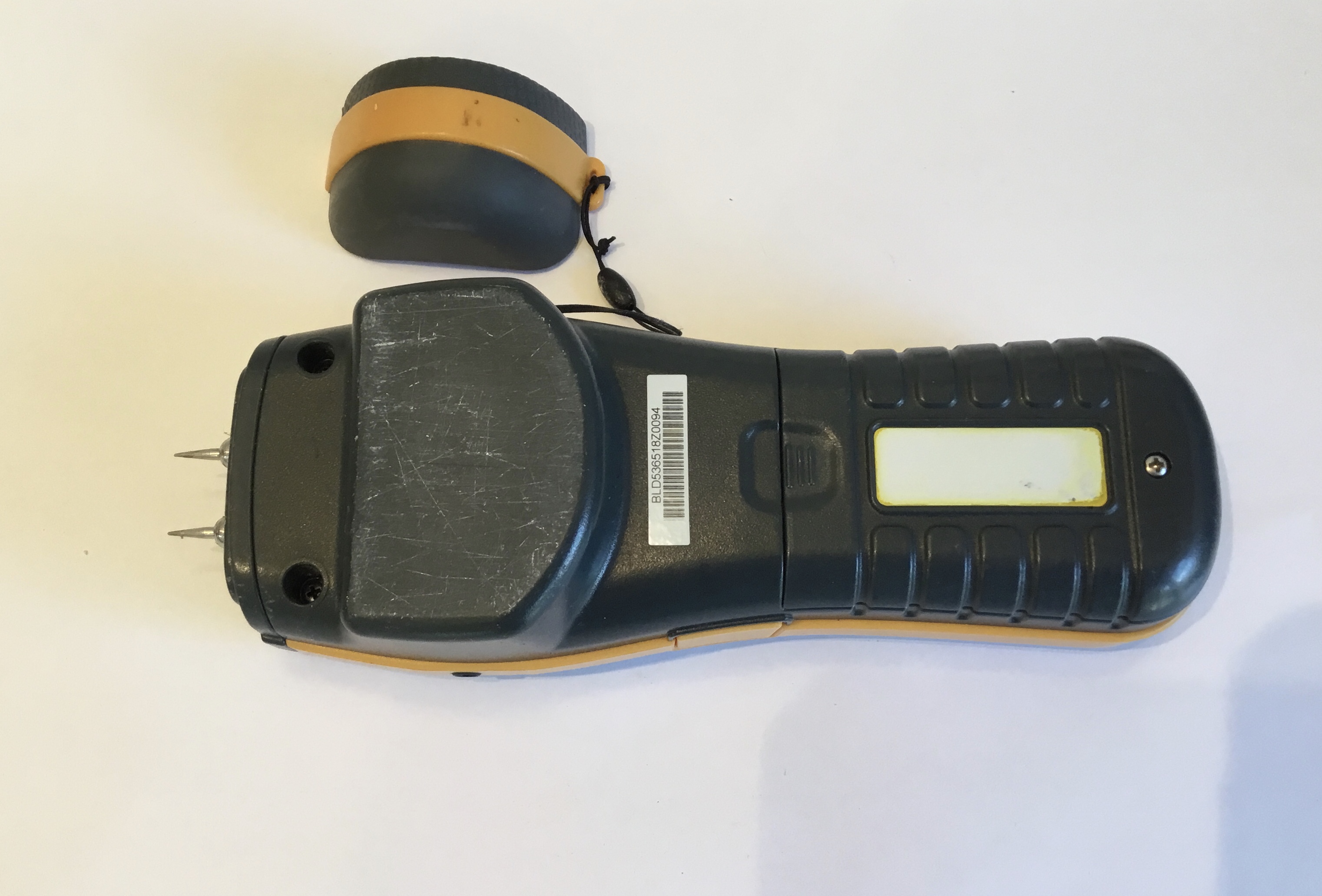
Search Mode Sensor Pad
A very handy feature for the surveyor who is carrying out home inspections as clients can be quite unhappy with the small holes that the conductance probes can leave behind when taking a reading from nicely decorated skirting boards or walls!
While hand held moisture meters such as these are incredibly useful in aiding identification of a moisture issue they are not without limitation. They cannot differentiate between dampness from one source and that from another. Erroneous readings can result from walls that are suffering from salt migration or condensation. If however, combined with the correct training and experience by the user, it can offer a quick, easy and non-destructive way in arriving at a final conclusion.
